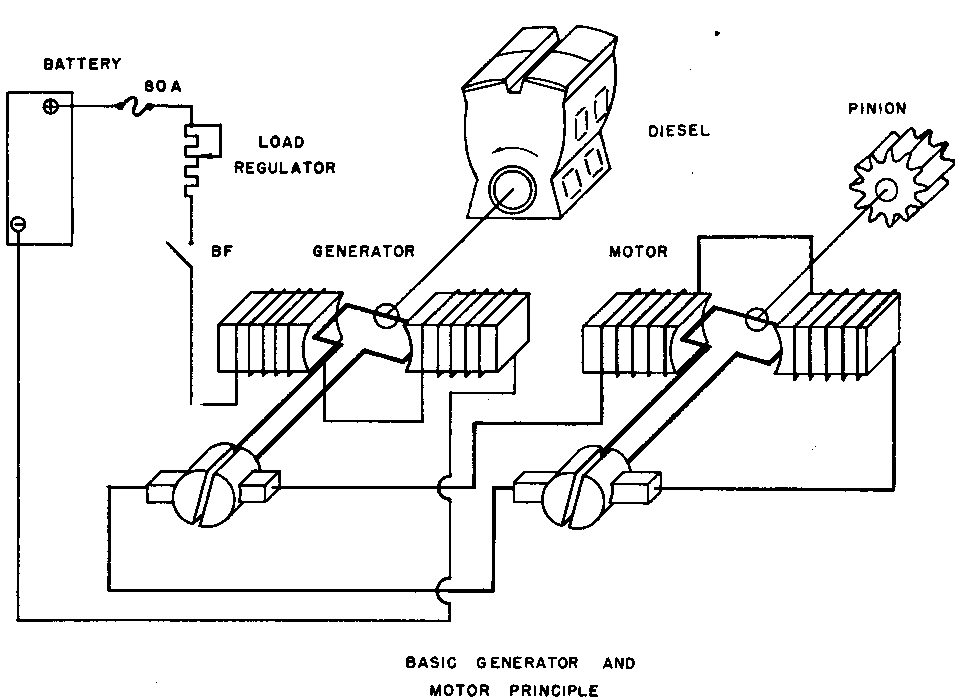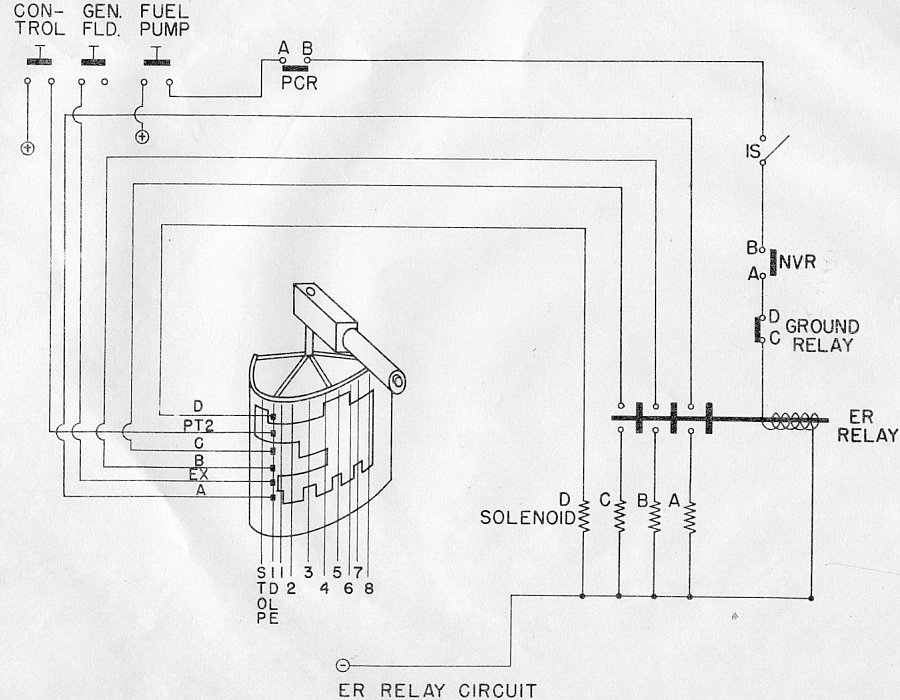DIESEL-ELECTRIC FUNDAMENTALS
 |
 |
| Basic EMD Motor/Generator
Connections |
Basic EMD Throttle Connections |
 |
 |
| Basic EMD Motor/Generator
Connections |
Basic EMD Throttle Connections |
1. The purpose of the main generator in a Diesel-Electric locomotive is to convert the mechanical horsepower developed in the Diesel engine into electrical power.
2. The generator cannot put out more power than the engine is developing.
3. The generator and traction motors are just an electrical transmission of the power that the Diesel is developing in its cylinders by burning fuel oil.
4. The horsepower output of the Diesel engine and generator is controlled, and held to a fixed amount for each, by the action of the governor and load regulator.
5. The power output of the engine and generator increases as the throttle is advanced, because more fuel is being injected into the cylinders.
6. This power is measured in watts, which is the product of the voltage (pressure) x amperage (current) of the generator. For example, 150 volts x 100 amperes = 15,000 watts (15KW).
7. The traction motors divide this power equally; if there are four motors attached to a generator, each motor gets one quarter of the power coming from the generator.
8. This is true whether the motors are in series or parallel.
9 The motors will draw a heavy current (amperage) when starting a train, or while running at slow speed.
10. To keep from overheating the generator by drawing too much amperage from it when starting a train, the motors are "hooked up" in series.
11. When motors are in series, the current from the generator flows through one after the other - the same current flows through all.
12. This can be compared to a compound steam engine where the steam is used over again in succession in the various cylinders.
13. The current, or amperage, produces a powerful turning force, or torque, in the motors. This will start the wheels turning.
14. All motors develop back pressure (counter EMF) as their speed increases. Because the motors are in series, their combined back pressures buck the generator pressure, limiting the amount of current that can flow into the motors.
15. Unless transition from series to parallel is made, the developed horsepower of the engine and generator will begin to drop off. This is due to the generator's having a limited pressure capacity, and if transition is not made the locomotive will not be able to take a train up to its rated speed.
16. The motors are then "hooked up" in parallel by moving the engineer's transition lever.
17. This allows the full generator pressure to be put upon each motor individually. This continues to force current into the motors, causing the train to increase speed.
18. But when motors are in parallel, each motor has a direct source of current from the generator, and if the train speed should decrease due to a grade it is possible to overload the generator.
19. When the speed of the train decreases due to a grade the motors are put back in series.